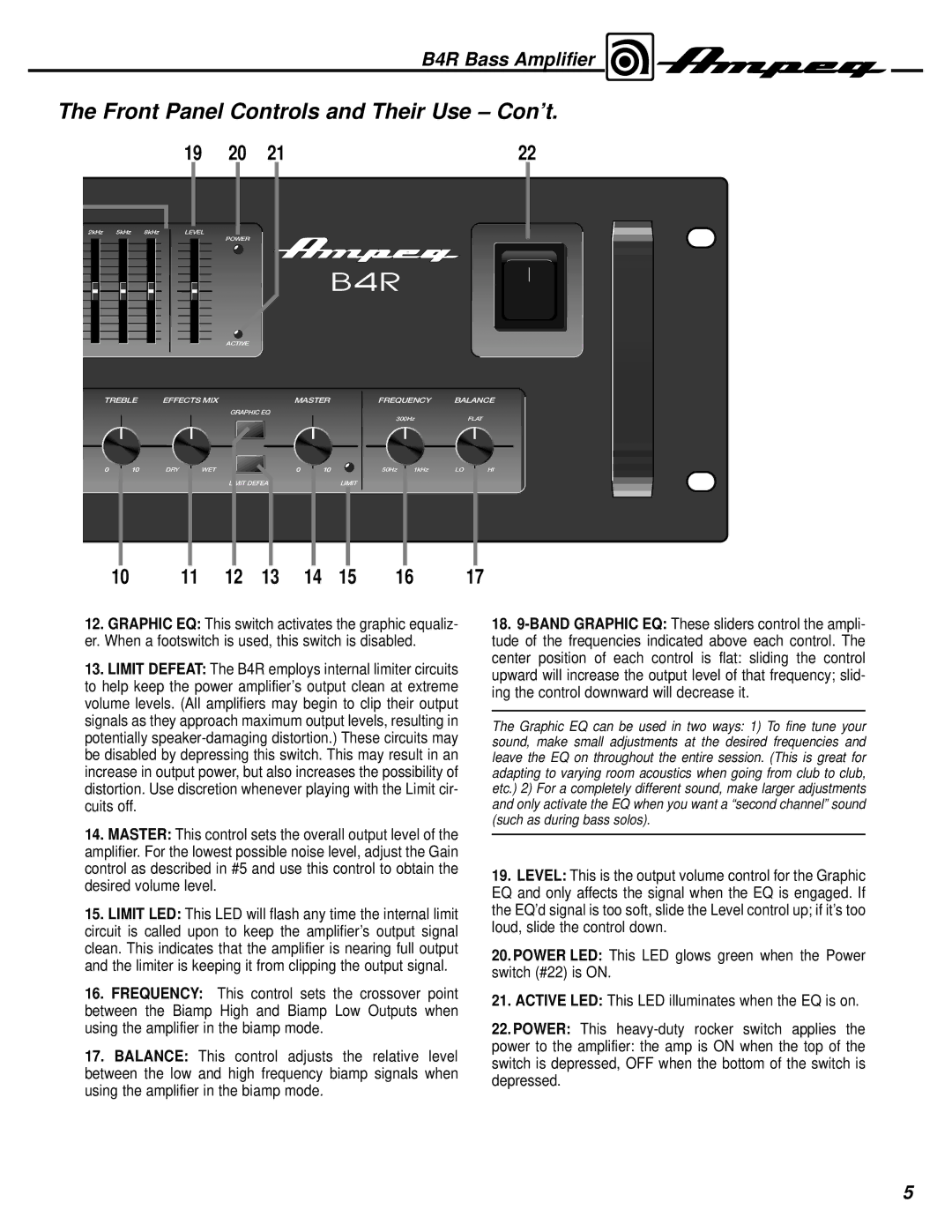
B4R Bass Amplifier
The Front Panel Controls and Their Use – Con’t.
19 | 20 | 21 | 22 |
2kHz 5kHz 8kHz
LEVEL
POWER
ACTIVE
TREBLE | EFFECTS MIX | MASTER |
GRAPHIC EQ
FREQUENCY BALANCE
300HzFLAT
DRY
WET
LIMIT DEFEAT
LIMIT
50Hz | 1kHz | LO |
HI
10 | 11 | 12 | 13 | 14 | 15 | 16 | 17 |
12.GRAPHIC EQ: This switch activates the graphic equaliz- er. When a footswitch is used, this switch is disabled.
13.LIMIT DEFEAT: The B4R employs internal limiter circuits to help keep the power amplifier’s output clean at extreme volume levels. (All amplifiers may begin to clip their output signals as they approach maximum output levels, resulting in potentially
14.MASTER: This control sets the overall output level of the amplifier. For the lowest possible noise level, adjust the Gain control as described in #5 and use this control to obtain the desired volume level.
15.LIMIT LED: This LED will flash any time the internal limit circuit is called upon to keep the amplifier’s output signal clean. This indicates that the amplifier is nearing full output and the limiter is keeping it from clipping the output signal.
16.FREQUENCY: This control sets the crossover point between the Biamp High and Biamp Low Outputs when using the amplifier in the biamp mode.
17.BALANCE: This control adjusts the relative level between the low and high frequency biamp signals when using the amplifier in the biamp mode.
18.
The Graphic EQ can be used in two ways: 1) To fine tune your sound, make small adjustments at the desired frequencies and leave the EQ on throughout the entire session. (This is great for adapting to varying room acoustics when going from club to club, etc.) 2) For a completely different sound, make larger adjustments and only activate the EQ when you want a “second channel” sound (such as during bass solos).
19.LEVEL: This is the output volume control for the Graphic EQ and only affects the signal when the EQ is engaged. If the EQ’d signal is too soft, slide the Level control up; if it’s too loud, slide the control down.
20.POWER LED: This LED glows green when the Power switch (#22) is ON.
21.ACTIVE LED: This LED illuminates when the EQ is on.
22.POWER: This
5
